A campfire, with its crackling flames and glowing embers, serves as a timeless centerpiece for countless outdoor adventures. Whether you find yourself nestled in the wilderness on a camping trip or simply relishing a tranquil evening in the comfort of your own backyard, the allure of a campfire is undeniable. But amidst the mesmerizing dance of the flames, have you ever pondered the scorching intensity that lies within? Just how hot does a campfire truly burn, casting its radiant warmth and casting flickering shadows upon the canvas of nature’s beauty?
Overview of Campfires
A campfire, with its flickering flames and crackling sounds, is a mesmerizing sight that brings people together in the spirit of camaraderie and adventure. Whether it’s nestled in the heart of a dense forest or on a sandy beach under a starlit sky, a campfire creates an inviting atmosphere that invites storytelling, laughter, and connection.
Picture this: a group of friends huddled around the warmth of the campfire, their faces illuminated by the dancing glow. The scent of burning wood fills the air, mingling with the aroma of roasted marshmallows and sizzling sausages. The crackling embers provide the perfect backdrop for tales of daring escapades, shared memories, and dreams of future expeditions.
In the tranquil stillness of the night, the campfire’s warm embrace fosters a sense of togetherness. It is a place where bonds are strengthened, where friendships are forged, and where memories are etched into the fabric of our lives. So gather around, stoke the fire, and let the magic of the campfire ignite your spirit of adventure and create moments that will be cherished for a lifetime.[2]
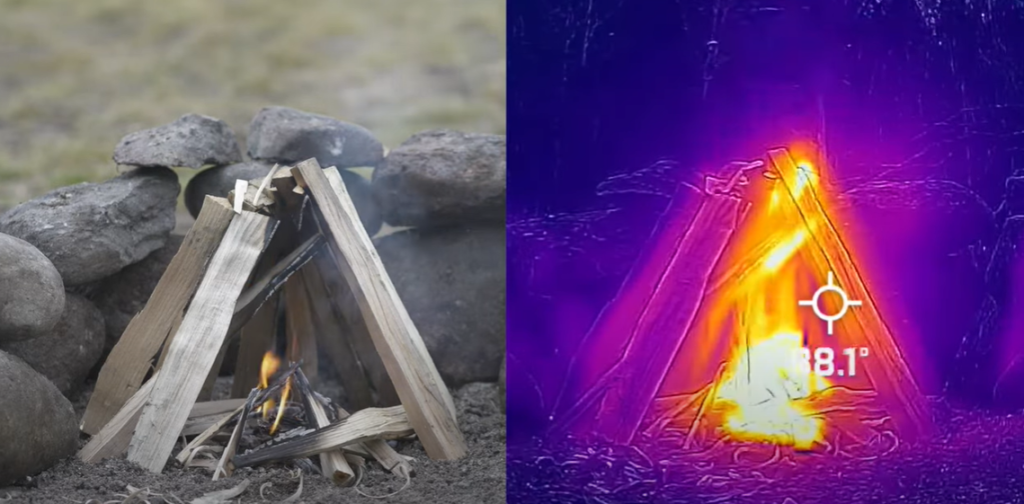
The Science Behind Campfire Heat
But amidst all the beauty and nostalgia, there lies a question that may have crossed your mind: just how hot does a campfire truly burn? The answer may surprise you.
A typical campfire can reach temperatures of up to 1100 degrees Celsius (2012 degrees Fahrenheit)! This intense heat is produced by the combustion reaction between oxygen and the fuel source, which is typically wood. As the fire consumes the wood, it releases energy in the form of heat and light.
But what about the glowing embers that radiate warmth even after the flames have died down? Well, those embers can reach temperatures of up to 900 degrees Celsius (1652 degrees Fahrenheit)! This is because they continue to smolder, releasing heat as they slowly burn out.
So next time you’re gathered around the campfire, roasting marshmallows and sharing stories, remember the impressive heat that lies within those mesmerizing flames. And don’t forget to keep a safe distance to avoid getting burned![2]
Temperature Zones in a Campfire
Core Temperature
The heart of a campfire, often referred to as the core temperature, is the central region where the flames burn brightest and with the greatest intensity. It is within this fiery core that the combustion reaction reaches its zenith, emitting a scorching and formidable heat that can soar to incredible temperatures, reaching up to a staggering 1100 degrees Celsius (2012 degrees Fahrenheit). The searing glow and mesmerizing dance of the flames within this fiery crucible create an enchanting spectacle, captivating all who gather around its radiant warmth.
As the flames flicker and sway, they cast enchanting shadows that dance and play across the surrounding landscape. The crackling and popping of the burning wood add a rhythmic symphony to the ambient sounds of nature, creating a symphony of warmth and tranquility. The scent of burning wood fills the air, mingling with the crisp night breeze, evoking a sense of nostalgia and a longing for simpler times.
The campfire becomes a gathering place, drawing people closer together as they huddle around its radiant warmth. Conversations flow freely, laughter fills the air, and stories are shared, creating lasting memories and forging deep connections. The campfire becomes not just a source of heat, but a source of comfort and camaraderie, a sanctuary from the outside world.
In this magical realm of flickering flames and crackling embers, time seems to stand still. Worries and stresses fade away, replaced by a sense of peace and serenity. As the night sky blankets the world in darkness, the campfire becomes a beacon of light, guiding and uniting those who gather around it.[1]
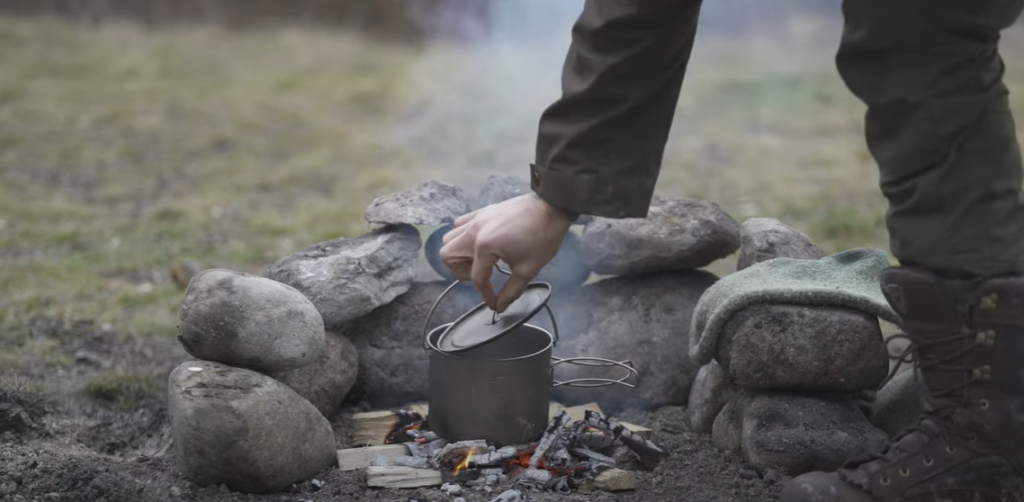
Hottest Point in the Flames
As the flames dance within the core of the campfire, they also reach up and outwards, creating a conical shape that tapers towards the top. This cone-shaped structure is where you can find the hottest point in the flames – known as the primary combustion zone.
This hottest point in the flames also contributes to the mesmerizing dance and flickering glow of the campfire. As the gases are released, they interact with oxygen in the air, creating the beautiful colors and patterns that we associate with a campfire. So next time you’re gathered around the fire, take a moment to appreciate the incredible heat and chemistry at work within those captivating flames.[1]
Material Combustion Temperature
Aside from the temperatures within the core and hottest point of the flames, there is also a third temperature zone to consider: the material combustion temperature. This refers to the point at which materials such as wood, leaves, paper, etc. begin to ignite and burn.
Different types of materials have different combustion temperatures, with wood typically igniting at around 300 degrees Celsius (572 degrees Fahrenheit). This is why it’s important to use dry, seasoned wood when building a campfire, as wet or green wood will not easily catch fire and contribute to the heat. It’s also crucial to have proper safety measures in place when starting and tending to a campfire, as things can quickly get out of hand if not monitored closely.
So next time you’re gathered around the campfire, take a moment to appreciate the different temperature zones at work and marvel at the science behind this timeless tradition. And remember, while building and tending to a fire requires caution and care, it’s also an opportunity to connect with nature and those around us in a meaningful way.[1]
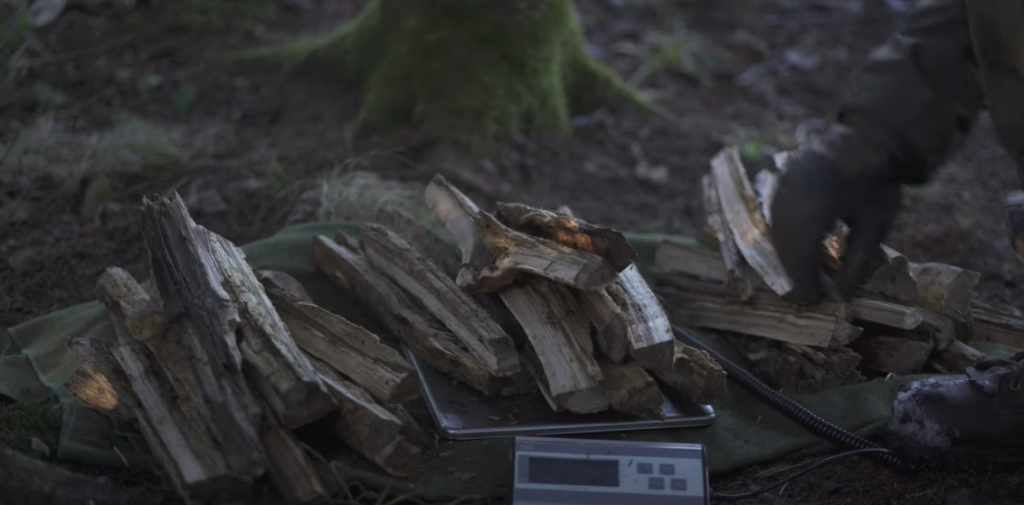
Peripheral Temperature
As the flames rage within the core of the campfire, creating a mesmerizing dance of light and warmth, there is also a peripheral temperature zone that extends beyond the main fire. This area, often overlooked, is where you can find glowing embers and smoldering logs that radiate intense heat even after the flames have died down.
Picture this: you sit on a log, wrapped in a cozy blanket, feeling the gentle crackle of the fire and the comforting glow of the embers. The peripheral temperature zone, reaching up to 900 degrees Celsius (1652 degrees Fahrenheit), provides a steady and continuous source of warmth that envelopes you in its embrace. It’s like having your own personal heater, keeping you snug and toasty on those crisp, chilly nights.
However, sitting close to the campfire can sometimes feel hot and uncomfortable, as the radiant heat from the embers is directed towards you. But fear not, for there are ways to fully enjoy the cozy atmosphere without overheating. Remember to keep a safe distance, allowing the warmth to envelop you without becoming overwhelming. And don’t forget to periodically rotate your position, ensuring that you experience the full spectrum of the fire’s warmth without getting too hot or burned.
As the night draws to a close and it’s time to bid farewell to the campfire, always remember to properly extinguish the fire before leaving the area. This ensures the safety of the surroundings and preserves the beauty of nature for future campers to enjoy.[1]
Heat Radiating from the Fire
Beyond the different temperature zones within the campfire itself, there is also heat radiating outwards from the fire. This is known as radiant heat, which travels through the air and warms up objects that it comes into contact with.
On a chilly night, you may have noticed that sitting closer to the campfire creates a warmer and more comfortable feeling than sitting further away. This is because the radiant heat from the fire is reaching you and warming you up directly.
Understanding the dynamics of radiant heat is crucial for outdoor enthusiasts, as it allows them to strategically position themselves to maximize warmth and comfort. By adjusting their proximity to the fire and considering environmental factors, they can optimize their campfire experience.
Furthermore, the radiant heat from a campfire not only provides physical warmth but also creates a cozy ambiance. The flickering flames, dancing shadows, and crackling sounds contribute to a sense of relaxation and tranquility, enhancing the overall outdoor experience.[1]
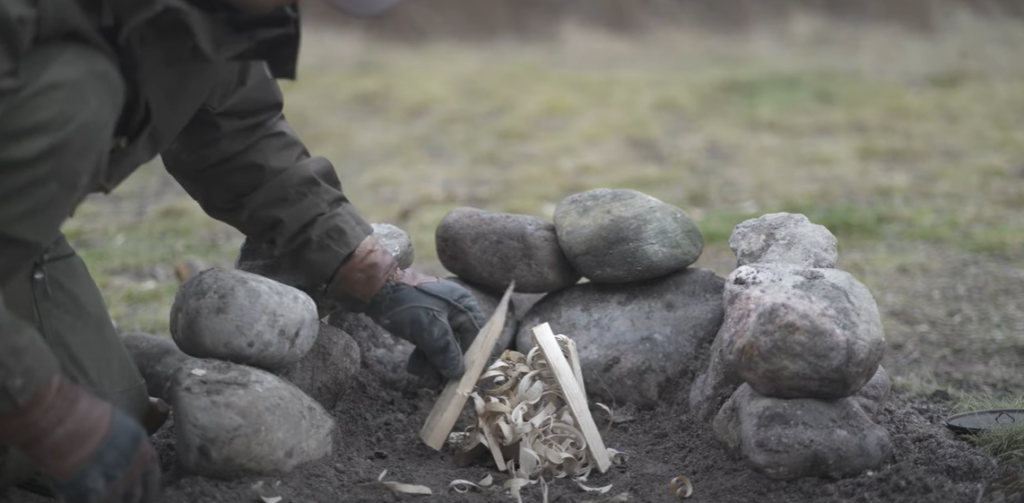
Factors Influencing Campfire Temperature
While the general temperature ranges discussed above may apply to most campfires, there are various factors that can influence the heat and intensity of a fire. One crucial factor to consider is the type of fuel being burned. Different types of wood or materials will have varying combustion temperatures and burn properties, ultimately affecting the overall temperature of the fire. For example, hardwoods such as oak or maple tend to burn at higher temperatures and produce more intense heat compared to softwoods like pine or cedar.
Another significant factor that can impact campfire temperature is air flow. A well-ventilated fire will burn hotter and more efficiently, as oxygen is needed for the combustion process. On the other hand, a fire that is smothered or lacks sufficient airflow will produce less heat. Properly arranging the logs and creating a good airflow can make a significant difference in the temperature and performance of the fire.
Moreover, weather conditions also play a role in campfire temperature. Wind can cause flames to flicker and dance erratically, redistributing heat and affecting the overall temperature. Rain, on the other hand, can make it challenging to start or maintain a fire, as wet wood tends to burn less efficiently. Additionally, humidity levels can impact the heat output of a fire, with high humidity potentially reducing the intensity of the flames.
So while there are some general guidelines for campfire temperature, it’s important to consider these various factors when building and tending to a fire. By taking into account the type of fuel, ensuring proper air flow, and being mindful of weather conditions, you can optimize the heat and performance of your campfire. And always remember to prioritize safety and respect for nature when enjoying the warmth and beauty of a campfire.[3]
Safety Considerations
As we’ve discussed, campfires can reach extremely high temperatures and pose potential dangers if not handled properly. Therefore, it is absolutely essential to follow safety guidelines to ensure a safe and enjoyable experience.
First and foremost, before starting a campfire, it is crucial to check local regulations and guidelines. Some areas may have restrictions or bans in place, especially during dry conditions or when there are other factors that increase the risk of wildfires. By being aware of and adhering to these regulations, we can help prevent accidents and protect the environment.
When building a fire, it is important to use a designated fire pit or ring to contain the flames. This not only helps maintain the fire’s integrity but also ensures that it is at a safe distance from surrounding tents, trees, and other flammable objects. By taking this precaution, we can minimize the risk of accidental fires spreading and causing harm.
To start a fire safely, it is recommended to use only dry materials and avoid the use of accelerants such as gasoline. Using dry materials helps ensure a controlled burn and reduces the risk of uncontrollable flames. Additionally, it is always advisable to have water or a shovel nearby to quickly extinguish the fire if necessary. This proactive approach helps us be prepared for unforeseen circumstances and promotes responsible fire management.
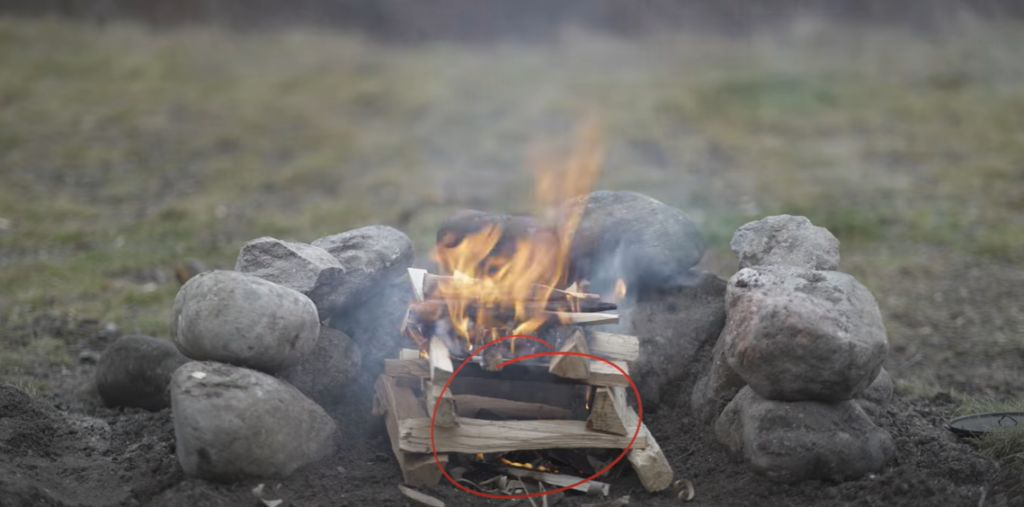
Furthermore, it is crucial to never leave a campfire unattended. Even a small fire can quickly escalate into a dangerous situation if left unsupervised. By staying vigilant and attentive, we can prevent accidents and mitigate potential risks.
After enjoying the warmth and ambiance of a campfire, it is vital to completely extinguish it before leaving the area. This entails dousing the fire with water or smothering it with dirt until there are no more embers or hot coals remaining. It is important to double-check that the fire is fully out to prevent any chances of reignition and to ensure the safety of the surroundings.
By following these detailed guidelines, we can create a safe and responsible campfire experience that allows us to enjoy the beauty of nature while minimizing risks and protecting the environment.[3]
Applications of Campfire Heat
While the primary purpose of a campfire is to provide warmth and light, there are also various other applications for its heat. For instance, aside from cooking food, campfires can be used to warm up wet or cold gear, dry out socks and shoes, and even help with first aid by sterilizing equipment.
Finally, the heat from a campfire can also provide psychological benefits by creating a cozy atmosphere and promoting relaxation and social interaction. The warmth and light of a campfire can bring people together and create lasting memories, making it an essential part of many outdoor adventures.[3]
FAQ
How hot is a campfire in Celsius?
Campfire temperatures can vary quite significantly, typically falling within the range of 600 to 900 degrees Celsius. This scorching heat not only creates a mesmerizing display of dancing flames, but it also provides the perfect environment for roasting marshmallows to gooey perfection and warming the hearts of those gathered around its radiant glow. So, whether it’s a chilly evening under the stars or a cozy gathering with loved ones, the campfire’s fiery embrace is sure to create lasting memories.
How hot is fire fire?
The temperature of a fire can vary depending on various factors, such as the type of fuel, airflow, and weather conditions. However, a typical campfire can reach temperatures between 600 to 900 degrees Celsius. It is essential to always exercise caution and follow safety guidelines when near any fire, including a campfire. By doing so, we can enjoy the warmth and benefits of a campfire without putting ourselves or the environment at risk.
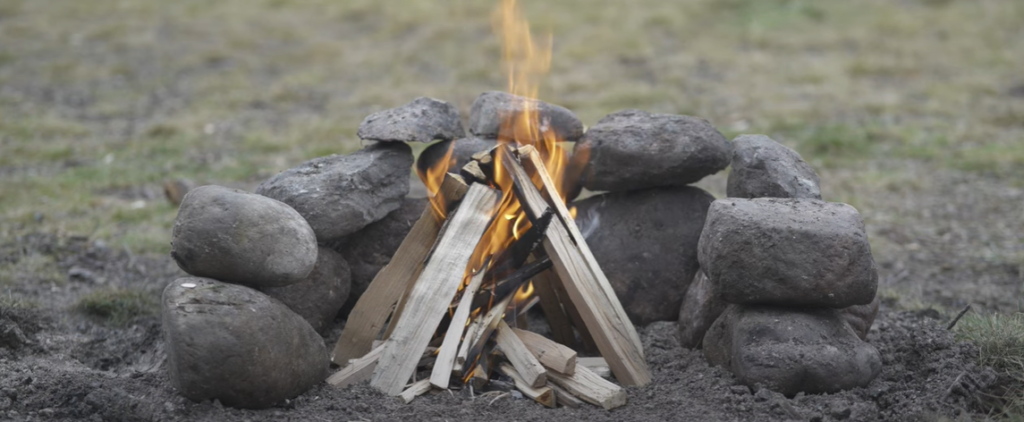
How hot is the blue flame on a campfire?
The blue flame on a campfire is often the hottest part of the fire, with temperatures reaching up to 1000 degrees Celsius. This intense heat is a result of complete fuel combustion and can be used for tasks such as boiling water or cooking food quickly. However, it’s important to remember that this high temperature also poses potential dangers and should always be handled carefully.
Is black fire hot?
Black fire, also known as ultra-hot fire, is a type of flame that emits almost no light and instead appears black to the naked eye. This phenomenon occurs when fuel is burned at extremely high temperatures, reaching up to 1,400 degrees Celsius or more. While it may seem intriguing and mysterious, black fire should be approached with caution and proper safety measures in place due to its intense heat. So, while we may not see it in a traditional campfire, it serves as a reminder of the immense power and potential dangers of fire.
Does black fire exist?
Yes, black fire does exist and can be created in controlled environments. However, it is not a common occurrence and should only be attempted by professionals with the necessary knowledge and safety precautions in place. The average person is unlikely to encounter black fire in their daily lives but can appreciate its fascinating characteristics from a safe distance via scientific demonstrations or simulations. As with any type of fire, it is essential to handle black fire with caution and respect its immense heat.
Is white fire real?
White fire, also known as blue-tinged or super-heated flame, is another type of flame that emits intense heat and minimal light. This type of fire often appears white or bluish-white and can reach temperatures upwards of 1,800 degrees Celsius. Similar to black fire, it is not a common occurrence in everyday life and should only be handled by professionals with proper safety measures in place. Its extreme heat and intensity make it a valuable tool for certain industrial processes but also emphasize the importance of responsible fire management to prevent accidents and injuries.
Does green fire exist?
Yes, green fire does exist and can be seen in certain natural phenomena, such as the Northern Lights or some types of bioluminescent plants. However, it is not a common occurrence in everyday fires and is typically created through chemical reactions rather than combustion. While it may seem mesmerizing and enchanting, it’s important to remember that any type of fire should be handled with caution and respect, regardless of its color. So, while we may not see it in a campfire, green fire serves as a reminder of the diverse and awe-inspiring aspects of nature that surround us.
Is white fire a thing?
Yes, white fire is a real phenomenon that can be created in certain controlled environments. However, it should not be confused with the traditional yellow-orange flames of a campfire or bonfire. This type of fire emits intense heat and appears almost white due to its high temperature and complete fuel combustion.
Useful Video: Campfires 101: Essential Tips for Beginner Campers
Conclusion
In conclusion, the heat of a campfire goes far beyond just keeping us warm and providing a source of light. Its intense temperatures can be used for various tasks, from cooking food to purifying water and even creating special effects. However, it’s essential to remember that fire is a powerful element that should always be respected and handled with caution. By understanding the different types of fire and their varying temperatures, we can appreciate the beauty and benefits of a campfire while also practicing responsible fire management. So, next time you gather around a campfire, take a moment to appreciate its warmth and remember the power it holds. Keep safe, enjoy the outdoors, and happy camping!
References:
- https://wildernessredefined.com/how-hot-is-a-campfire/
- https://gudgear.com/how-hot-is-a-campfire/
- https://campwagen.com/how-hot-is-a-campfire/



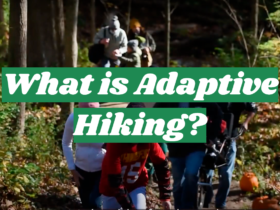

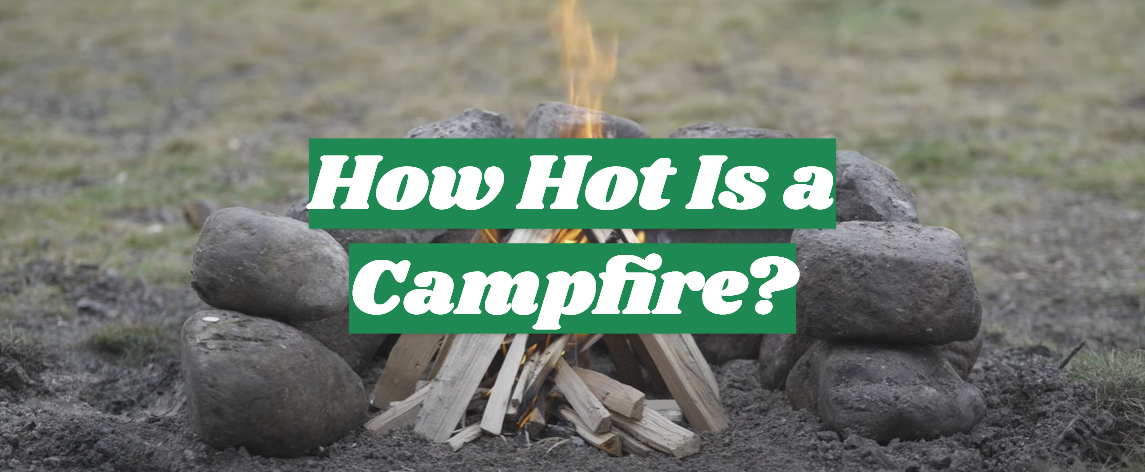


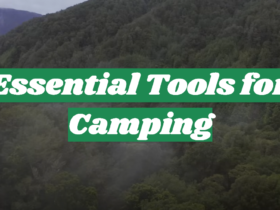
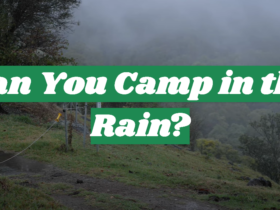
Leave a Review